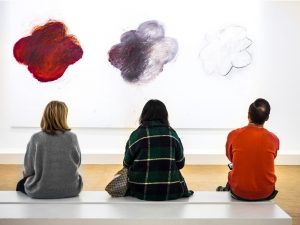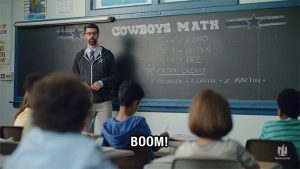
We began divulging into this unit with our second blog post where we were each able to see and discuss how art has different meanings to each individual. At this point we learned that, essentially, there is no singular definition for the word art and what we consider art. I enjoyed that experiencing this in the beginning of the unit because I never knew if what I thought of as art could actually be considered a form of art. I grew up with an artist for a brother, so I always assumed that in reality the only works of art that existed were paintings, sculptures, etc.; and now I am aware that it can be the opposite in most cases. After learning formal analysis and how to use it, I have found myself appreciating things that I consider art even more. For example, when looking at the plating of many foods that you online and in-person, you can use the formal analysis technique in many ways. When looking at dishes I find myself paying more attention to the colors used, especially for garnishing and whether they are meant to enhance or diminish the food. Or I have found myself observing the size of food and plates, and how the two work with each other. Some use a larger plate for small portions to showcase the real-life size, while others use plates to fit the food for scale and to display actual or an enhanced size.
Furthermore, I have also began to find a new appreciate to actual paintings and sculptures when I see them. There are different paintings around my house and I have found myself observing them with more detail. For example, I’m always intrigued by the shapes and kind of lines that are used. The painting in my house of a field of flowers, I can now see that it is done with light lines and strokes with minimal shading to show that they are blowing in the wind.
In this unit we also learned about the banking model by Paulo Friere. The banking model suggests that teachers and educators are there to fill “empty vessels” i.e. students with knowledge, in which the students then just regurgitate the knowledge and there is no critical thinking component. He also mentions that this is the traditional education system which I can agree with. Even to this day I have a professor here and there that just wants us to regurgitate the information/knowledge that they shared and does not wish to go further with the material and make the students use the information. While reading many of the blog posts during this unit, I found that many of my classmates experienced the same thing, even with higher education.
Lastly, we began exploring the ancient world. This was one of my favorite topics thus far because I have always had an interest in ancient worlds. It was interesting to learn more about their art works in depth and the reason that some of them were made. For example, we learned that in Ancient Mesopotamia there are many small figurines and sculptures that are all made to look very similar; long hair, wide eyes, and hands always cupped together. These figurines were made small so that they could be kept with a person at all times and to “replace” times where they are unable to pray to the gods. The figurines were meant to show the gods that the person did care and that they were still worshipping them even when they were working or sleeping. The people were scared to be in a situation where they are not seen praying to the gods or giving thanks to the gods because they saw them as the power to make things really good or very bad.




